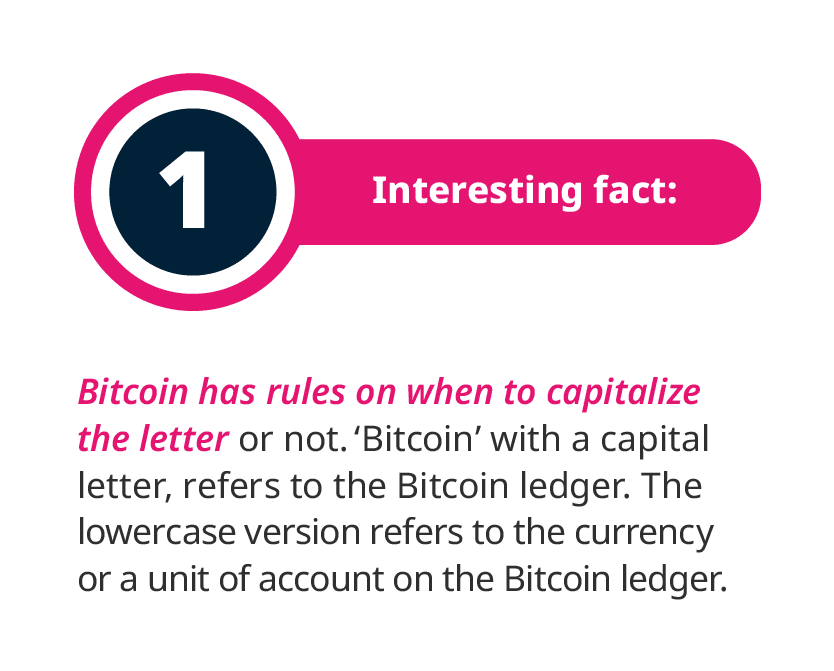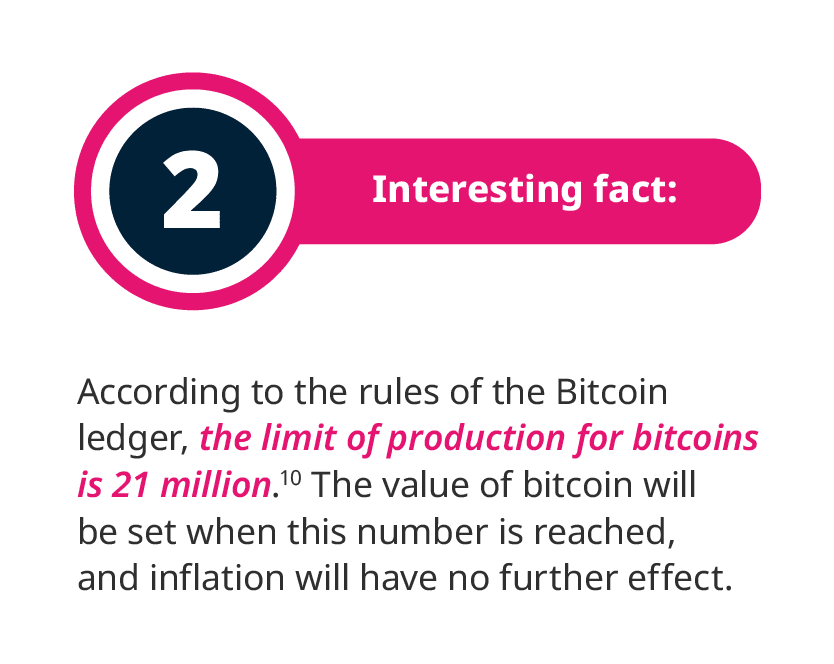The Truth About Blockchain Myths
In conversations around transformative technology, it’s almost inevitable that blockchain will enter the conversation. It’s no surprise: it’s risen from relative obscurity outside of technical circles just a few years ago to seemingly pervading every industry today. However, while not precisely new – the technology has been around for over a decade – blockchain is still not quite a mainstream revolution.1
Nevertheless, boardrooms and chat rooms alike are ablaze with talk of its potential. And as with any new technology, there are some myths doing the rounds. We’ve rounded up eight common myths below and debunked them.
Eight myths about blockchain technology
Myth 1: Blockchain and Bitcoin are the same

A common misconception is that blockchain technology and the cryptocurrency Bitcoin are the same thing. When Satoshi Nakamoto launched Bitcoin in 2009, it was the first real-world application of blockchain. But the concept was actually conceptualized by two researchers in 1991.2
Essentially, blockchain is a database of transactions stored in distributed form across a number of computers, known as nodes, on a network. When a transaction is entered, it’s sent to all the network nodes, which solve mathematical problems to confirm its validity. Validated transactions are clustered together into blocks, encrypted, and added onto the preceding block, forming a chain of data that lists all the records and requires a digital key to unlock.3 Every node has a copy of the database, which is updated each time a transaction is added.4
Bitcoin, on the other hand, is a decentralized digital currency that can be bought, sold, and exchanged directly without the need for any intermediary. Transactions on the Bitcoin network are verified by nodes called miners that race to solve the mathematical problems. Miners are rewarded for their efforts in new bitcoins.5 Bitcoin information is stored on a public blockchain.
Following the success of Bitcoin, hundreds of other cryptocurrencies have been created. The most popular of these are Ethereum, XRP, Tether, Cardano, and Polkadot.6

Myth 2: Blockchain doesn’t include verification

The problem with many traditional transactions today is that a ledger can be tampered with to reflect incorrect information, including adding and removing records. This impacts trust in the veracity of the information.7 One of the fundamentals of blockchain technology is the distributed database, which ensures all parties on the blockchain can access all records in the chain. As it’s decentralized, no single person has complete control over the blockchain, which makes it difficult to tamper with.8
Another key element is that blockchains are secured using cryptographic hashing. A hash is a string of unique characters that can be created from any piece of information. Each block is encoded with its own hash and the hash of the block that came before. If someone wanted to change the information in a given block, they’d have to change that block and every one that came after it in the chain, on the majority of the nodes in the network. This requires, in the case of a huge network like Bitcoin, for example, an astronomical amount of computing power, and thus money.9

Myth 3: Information on blockchain is confidential

Confidentiality in blockchain is not a given; it depends on whether the blockchain in question is public (permissionless) or private (permissioned). In a public blockchain, anyone can join the network, view the transaction history, and become a node. However, transactions are identified using a public key (derived from a privately held key), rather than their information. Thus, transactions are pseudo-anonymous by design.11
On a private blockchain – such as that operated by a bank, for example – users need authorization to read, access, and write information. Thus, access to private blockchains can be restricted and the information therein can be kept confidential.12
Myth 4: Blockchain has reached its full potential

Blockchain is viewed in some circles as a disruptive technology, while others argue that it is, rather, a foundational, general-purpose, or institutional technology.13 It’s been heralded as being revolutionary, but whether or not it actually has a radical effect on the status quo will depend on who adopts it, and how they implement it in their models and organizations.14
With the massive hype around its possibilities, there is a common misconception that all applications for blockchain technology have been explored. However, if you consider that PwC envisages blockchain technology as having a $1.76 trillion impact on global GDP over the next decade, it’s clear that it has anything but reached its full potential.
Myth 5: Blockchain is only relevant in finance

While blockchain is most closely associated with Bitcoin, it’s not restricted to the world of finance. The technology’s ability to create, store, and share sensitive information, for one, is applicable to a vast range of industries in a world increasingly dominated by data.15
Members of the Forbes Technology Council listed a number of supply chain operations, online voting, digital vaccine passports, loyalty programs, source verification, repeatable business processes, and identity theft protection, among others, as some areas where blockchain could dramatically improve efficiency.16
Myth 6: Blockchain is infinitely scalable

One of the biggest problems with blockchain usage as a transaction platform is the time it takes to complete blockchain transactions. High-volume cryptocurrencies are the perfect example of this shortcoming. While Visa, for example, can process 24,000 transactions per second, Ethereum and Bitcoin can only manage around 30 and seven respectively.17
For this reason, scaling up blockchain can present some challenges. The main factors affecting this are:18
Limitations – Increasingly lengthy blockchains’ transaction histories could cause a blockchain to fail. There’s also the issue of the hardware required to operate nodes.
Transaction fees – As growing blockchains require more computing power, so too do they attract greater fees.
Block size – There is debate in blockchain circles about increasing block sizes to accommodate more transactions. A number of projects have been attempted in this regard.
Response time – The more popular a network, the longer the validation process. Bitcoin, for example, needs around 10 minutes to build one new block.
Myth 7: Cryptocurrency enables criminal activity

There are concerns among regulators and governments that blockchain technology, in particular as it is applied to cryptocurrency, has the potential to facilitate illicit activity. Cryptocurrency organizations and blockchain forensics companies dispute this, pointing to research such as that conducted by Chainalysis, which found in its second annual Crypto Crime Report that 0.34 percent of all cryptocurrency activity in 2020 was linked to illegal activity, amounting to $10 billion in transaction volume.19
It must be understood that such research does not necessarily include all forms of crime, and that it only accounts for crime that is understood or known about, meaning the real figures may be higher. Also important to note is that given the nascent nature of cryptocurrencies, the number of law enforcement officers and agencies specializing in this sort of crime is still quite small.20
Myth 8: Blockchain eliminates fraud

Blockchain’s method of chaining data has the potential to discourage criminal activities such as fraud, as tampering with the transaction history means each subsequent block will reflect inaccurate data.21 For organizations that deal with checks, wire transfers, or automated clearing house payments, greater data protection could reduce vulnerability to fraud.22 Also, an important feature of blockchain is that the greater the network, the greater the number of people holding a copy of the distributed ledger, and thus the greater the security. This is what makes a hugely popular network like that of Bitcoin so secure.23
Despite this, however, blockchain itself is not an inherently trustworthy technology. It can’t solve fundamental issues of trust between people, nor remove the motivations that cause people to behave dishonestly. Users still need to be able to trust the majority of those contributing and verifying information in a network. In order to leverage its advantages to the full, blockchain should be implemented alongside complementary policies and educational programs that aim to curb dishonest behavior and disinformation.24
If you’re interested in understanding the truth about blockchain, the MIT Sloan School of Management’s six-week Blockchain Technologies: Business Innovation and Application online short course probes the technology’s impact on business and economics. The course equips students with the skills to implement a blockchain-based solution to address a business problem within their own context.
On the cryptocurrency front, the University of Cape Town (UCT) offers the Blockchain and Digital Currency: The Future of Money online short course. This six-week course delves into the intricacies of blockchain and cryptocurrency assets, revealing how the latter will shape the future of the financial industry.
SDA Bocconi School of Management’s five-week Bitcoin and Blockchain Program explores Bitcoin more specifically as it unpacks the technical pillars that underpin these technologies.
- 1 Ismail, K. (Jan, 2021). ‘A look at the current state of blockchain’. Retrieved from CMS Wire.
- 2 Hayes, A. (Nov, 2021). ‘Blockchain explained’. Retrieved from Investopedia.
- 3 Hayes, A. (Nov, 2021). ‘Blockchain explained’. Retrieved from Investopedia.
- 4 (Nov, 2021). ‘What is blockchain technology?’. Retrieved from CB Insights.
- 5 Ashford, K. and Curry, B. (Oct, 2021). ‘What is Bitcoin and how does it work?’. Retrieved from Forbes.
- 6 Haar, R. (Nov, 2021). ‘The 10 most popular cryptocurrencies, and what you should know about each before you invest’. Retrieved from Time.
- 7 Darlington, N. (Nov, 2021). ‘Blockchain for beginners: What is blockchain technology? A step-by-step guide’. Retrieved from Blockgeeks.
- 8 Hayes, A. (Nov, 2021). ‘Blockchain explained’. Retrieved from Investopedia.
- 9 Clark, M. (Sep, 2021). ‘Blockchain, explained’. Retrieved from The Verge.
- 10 Hayes, A. (What happens to Bitcoin after all 21 million are mined?’. Retrieved from Investopedia.
- 11 (Jan, 2020). ‘How is blockchain verifiable by the public and yet anonymous?’. Retrieved from ConsenSys.
- 12 (Jan, 2020). ‘How is blockchain verifiable by the public and yet anonymous?’. Retrieved from ConsenSys.
- 13 Kramer, M.P., et al. (Feb, 2021). ‘Blockchain and its impacts on agri-food supply chain network management’. Retrieved from MDPI.
- 14 Tatar, J. (Sep, 2021). ‘How blockchain technology is revolutionary’. Retrieved from The Balance.
- 15 (Oct, 2020). ‘Time for trust: The trillion-dollar reasons to rethink blockchain’. Retrieved from PwC.
- 16 (Jun, 2021). ‘16 Tech experts share blockchain’s potential outside the finance industry’. Retrieved from Forbes.
- 17 Hayes, A. (Nov, 2021). ‘Blockchain explained’. Retrieved from Investopedia.
- 18 Geroni, D. (Sep, 2021). ‘Blockchain scalability problem – why is it difficult to scale blockchain’. Retrieved from 101 Blockchains.
- 19 Grauer, K. and Updegrave, H. (Feb, 2021). ‘The 2021 crypto crime report’. Retrieved from Chainalysis.
- 20 Marrinan, P. (Mar, 2021). ‘Crypto-crime and caveats’. Retrieved from Thomson Reuters.
- 21 Clark, M. (Sep, 2021). ‘Blockchain, explained’. Retrieved from The Verge.
- 22 Thomas, D. (Mar, 2020). ‘Could blockchain eliminate payment fraud altogether?’. Retrieved from Raconteur.
- 23 (Nov, 2021). ‘What is blockchain technology?’. Retrieved from CB Insights.
- 24 Harrison, K. and Leopold, A. (Jul, 2021). ‘How blockchain can help combat disinformation’. Retrieved from Harvard Business Review.